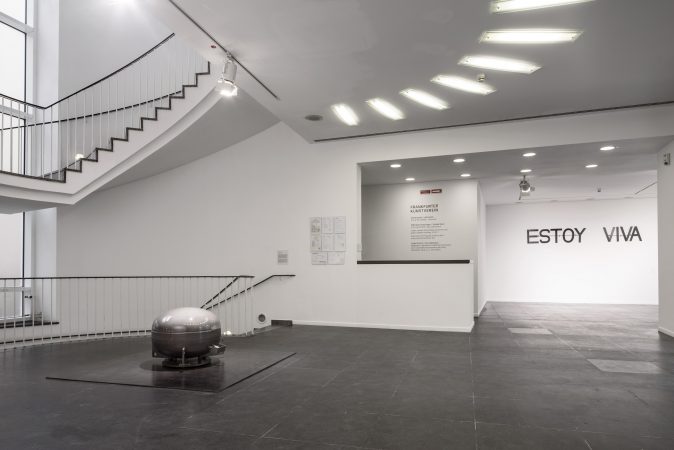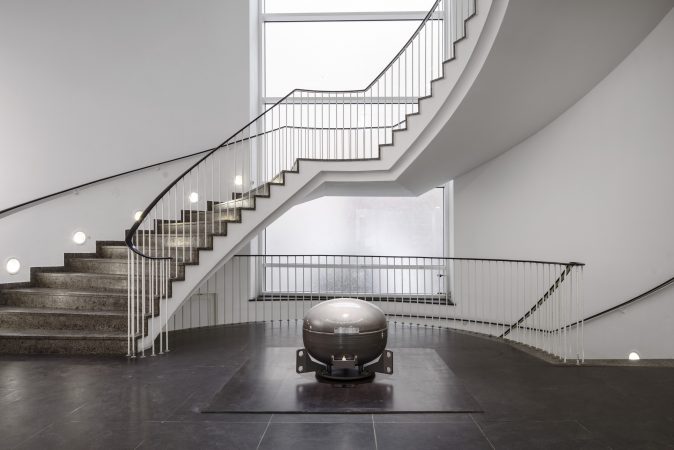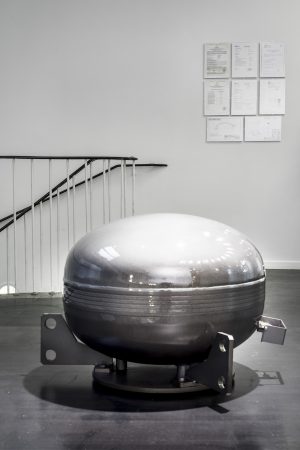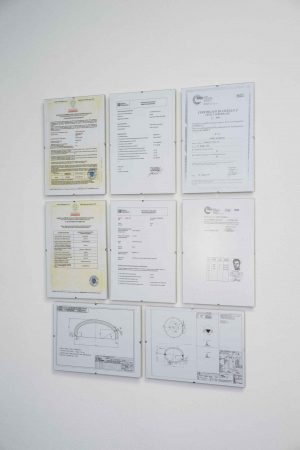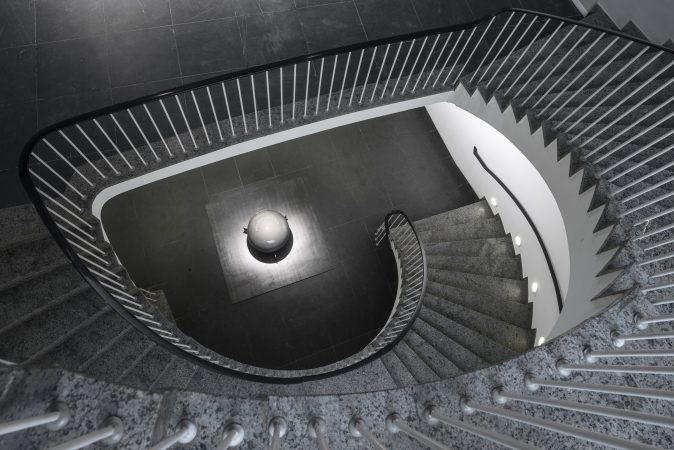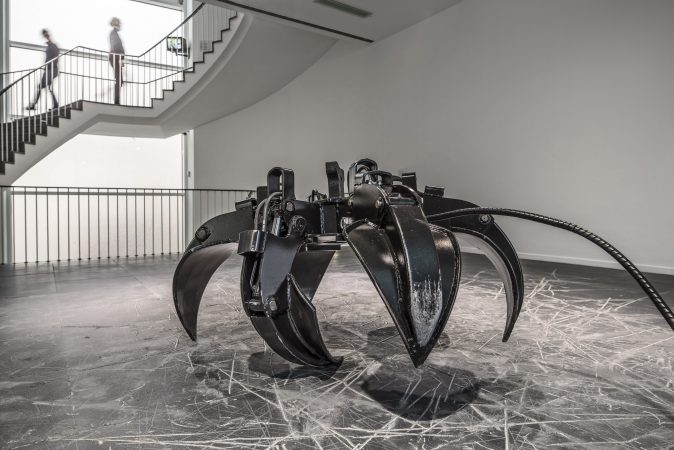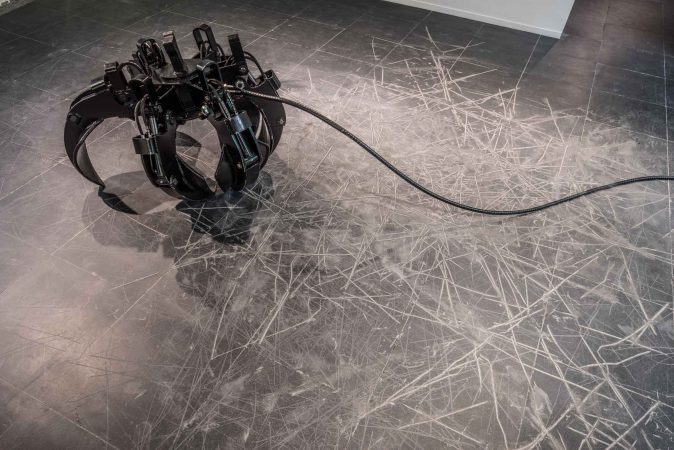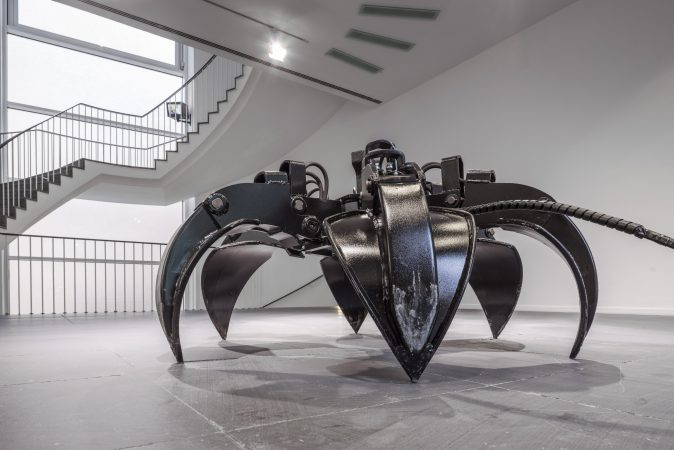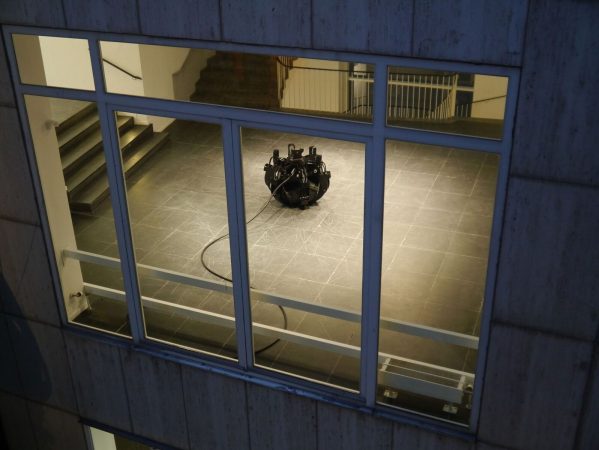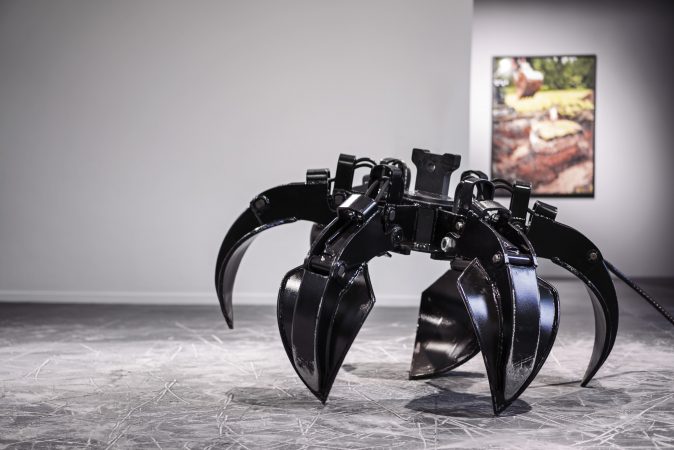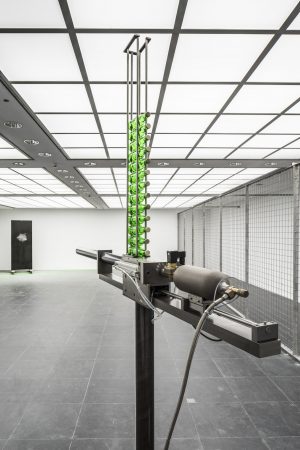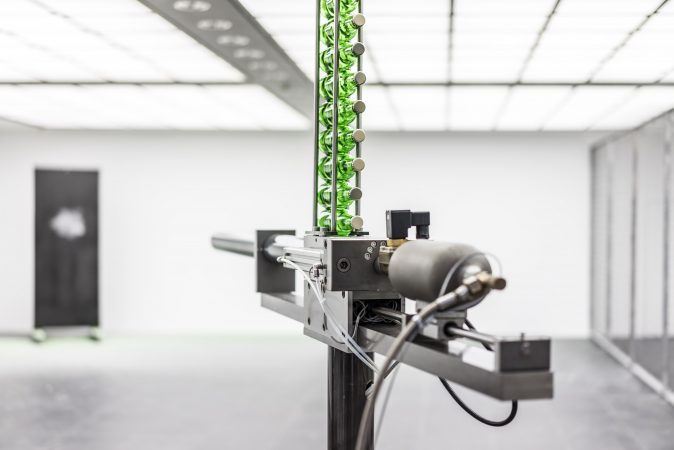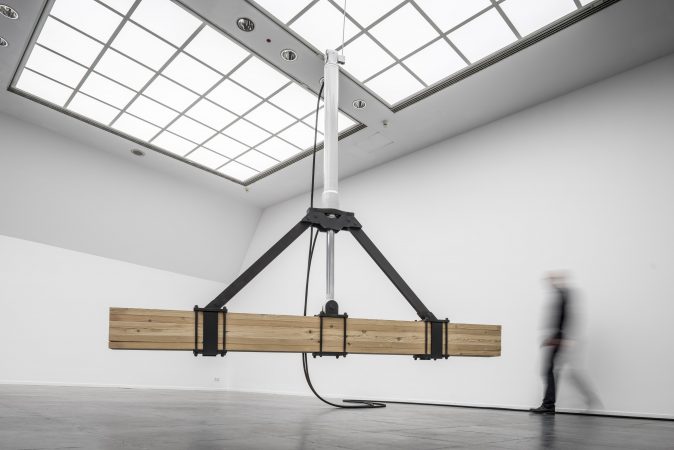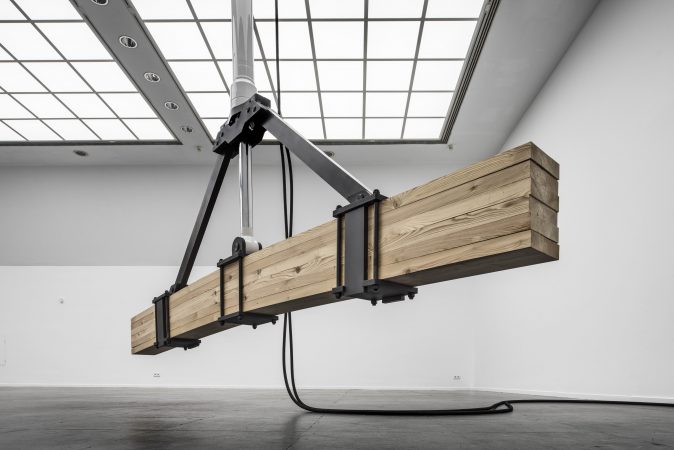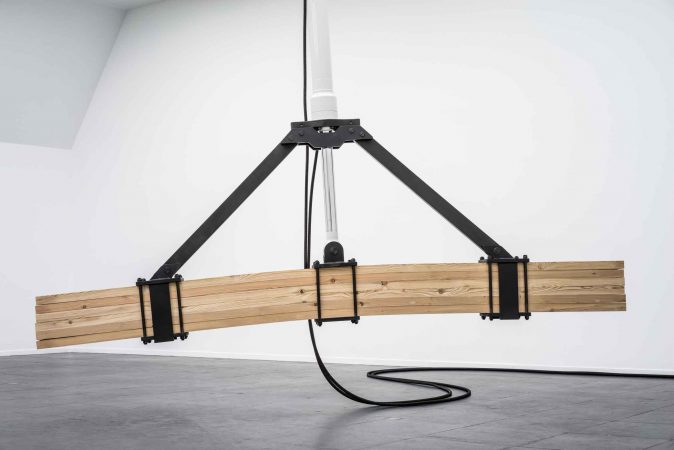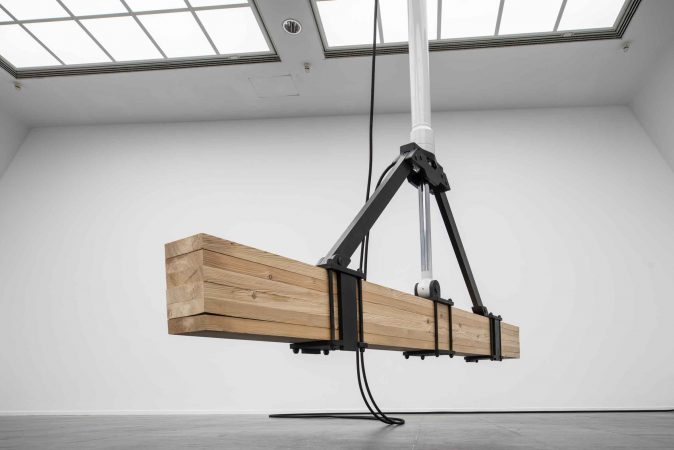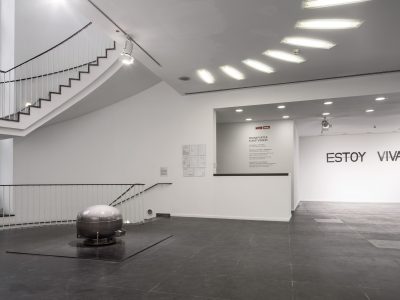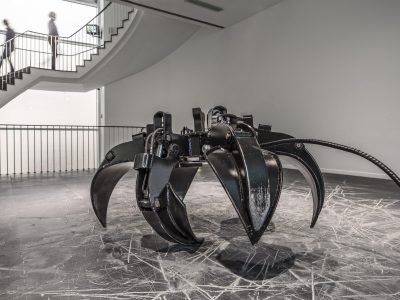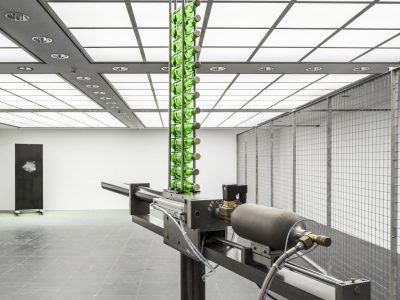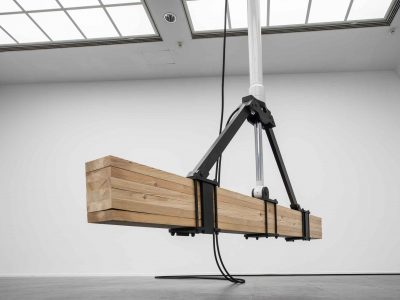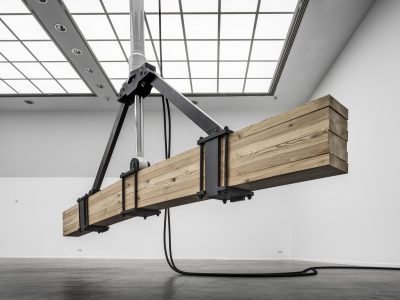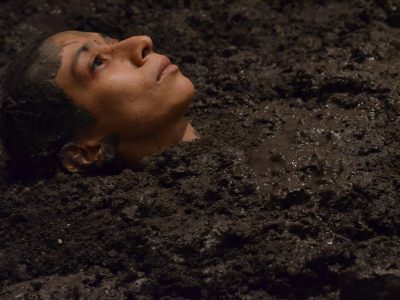Arcangelo Sassolino. Mechanisms of Power
19.02.2016 — 17.04.2016
Opening: February 18, 2016, 7 pm
Mechanisms of Power
Under the title “Mechanisms of Power”, the Frankfurter Kunstverein presents two monographic exhibitions of performance artist Regina José Galindo and sculptor Arcangelo Sassolino. Sassolino’s and Galindo’s approaches share the exploration of limitations of art and the constant presence of violence in our society.
Violence is intrinsically linked to power – no matter if this violence is physical or mental, spontaneous or organised, or whether it is happening in private or in public. Violence always serves as an instrument to disrupt, reinforce or defend existing power relations. In their works, Galindo and Sassolino point towards fundamental questions concerning violence and its consequences.
The spatial division of the two monographic overviews takes place through the vertical axis of the building. Associations that arise from juxtaposing facilitate new perspectives on both artists’ works within the course of the exhibition.
“Mechanisms of Power” at the Frankfurter Kunstverein is the first comprehensive exhibition of both artists in a German institution, for which both have especially conceived a new work: the performance “Secreto de Estado” (State Secret) by Regina José Galindo as part of the opening and the sculpture “Purgatory” of Arcangelo Sassolino.
Arcangelo Sassolino
The creaking of wood, glass shatters on steel, the sudden noise of a loud bang, followed by motionlessness and silence: In his sculptures and installations, Italian sculptor Arcangelo Sassolino brings the materials he uses to their limits, creating images of inner mental conditions. These works are based on questions about existence and finitude and the precarious balance between the two. The exhibition “Mechanisms of Power” at the Frankfurter Kunstverein presents a selection of monumental works and gives an insight into Sassolino’s artistic practice. Specifically for the exhibition, the artist has also created a new work with the title “Purgatory” (2016).
Sassolino develops mechanically precise and materially dense sculptures and large scale installations. The materials used he borrows from big industry, which gives them an air of cool, factual inanimateness. Displayed in a minimalist manner, materials like glass, steel, concrete and nitrogen are being transformed by the workings of massive forces.In an interplay between the generation and consumption of energy, between tension and resistance, these materials are subject to the competing physical forces that keep our world in balance. To achieve the highest possible level of accuracy, Sassolino calculates the attributes of his works in collaboration with mechanical engineers, physicians and mathematicians. The form of the sculptures is therefore defined by their function. The materials used are brought to their limits by gravity, pressure and tension, forces which suspend them in a state of near destruction at any time. In this residue of unpredictability, risk and control collide: the artist’s liminal experiments carry with them the danger of sudden destruction.
The sculptures of Sassolino inhabit the rooms of the Frankfurter Kunstverein like sleepers and only over time reveal their true nature. The processes initiated by Sassolino remain invisible over a long period of time, while their effects are immediate and enormous. Like secret agents who carry out their mission only after waiting a long time, the machines point towards the possibility of their activation only formally. Again and again, these machines lie still; then all of a sudden, movement occurs. Many times, these moments of abrupt activity generate impressive acoustic phenomena. We can only guess the impact of a setting like the installation “Afasia 1” (2008), when glass bottles hit a steel wall with 900 kilometers per hour and burst into countless particles. The work “Afasia 2” (2008) on the other hand, remains in continual standby mode and functions as a kind of reservoir for vast amounts of energy: its steel case contains 250 bar compressed nitrogen. The potential for destruction resting inside the sculpture manifests itself above all in the relationship with the viewer, whose perception is altered by the knowledge of the destructive force. For the work Untitled (2006-2007) Sassolino utilizes the claw of an excavator. Dismantled from its original body, it has been deprived of the capability of fulfilling its function. Although its immense power and presence are maintained in Sassolino’s installation, those are employed in vain against the stone floor of the exhibition space.
The striking ‘machine sculptures’ by Arcangelo Sassolino call into question their own principles, of construction, execution and existence due to the fact that they carry with them the possibility of their own destruction. Disintegration also signifies the release of energies, destruction means transformation into another state. Sassolino’s artistic practice is therefore neither solely focused on the creation of forces nor the simple destruction of materials. In the end, his work resists a binary opposition between existence and mortality. Despite their massive scale and power, these machines are not indestructible. In fact, they stage and display the possibility of their becoming (activation) and their termination (destruction) both at the same time.
Biography
Arcangelo Sassolino was born in Vicenza, Italy in 1967, where he lives and works. His solo exhibitions include Contemporary Art Museum, St. Louis, USA (2016), MACRO Museum, Rome, Italy (2011), Palais de Tokyo, Paris, France (2008), the environmental projects presented in Z33 House for Contemporary Art in Hasselt, Belgium (2010) and in the context of “Art and The City” in Zurich, Switzerland (2012). Sassolino’s work has been featured in a number of group exhibitions, including shows at 104, Paris, France (2015), Centro di Cultura Contemporanea Strozzina, Florence, Italy (2012, 2010), Swiss Institute, New York, USA (2011), Tinguely Museum, Basel, Switzerland (2010), Autocenter, Berlin, Germany (2009), Peggy Guggenheim Collection, Venice, Italy (2009), Dunkers Kulturhus, Helsingborg, Sweden (2008), FRAC, Rheims, France (2007) and ZKM, Karlsruhe, Germany (2004).

